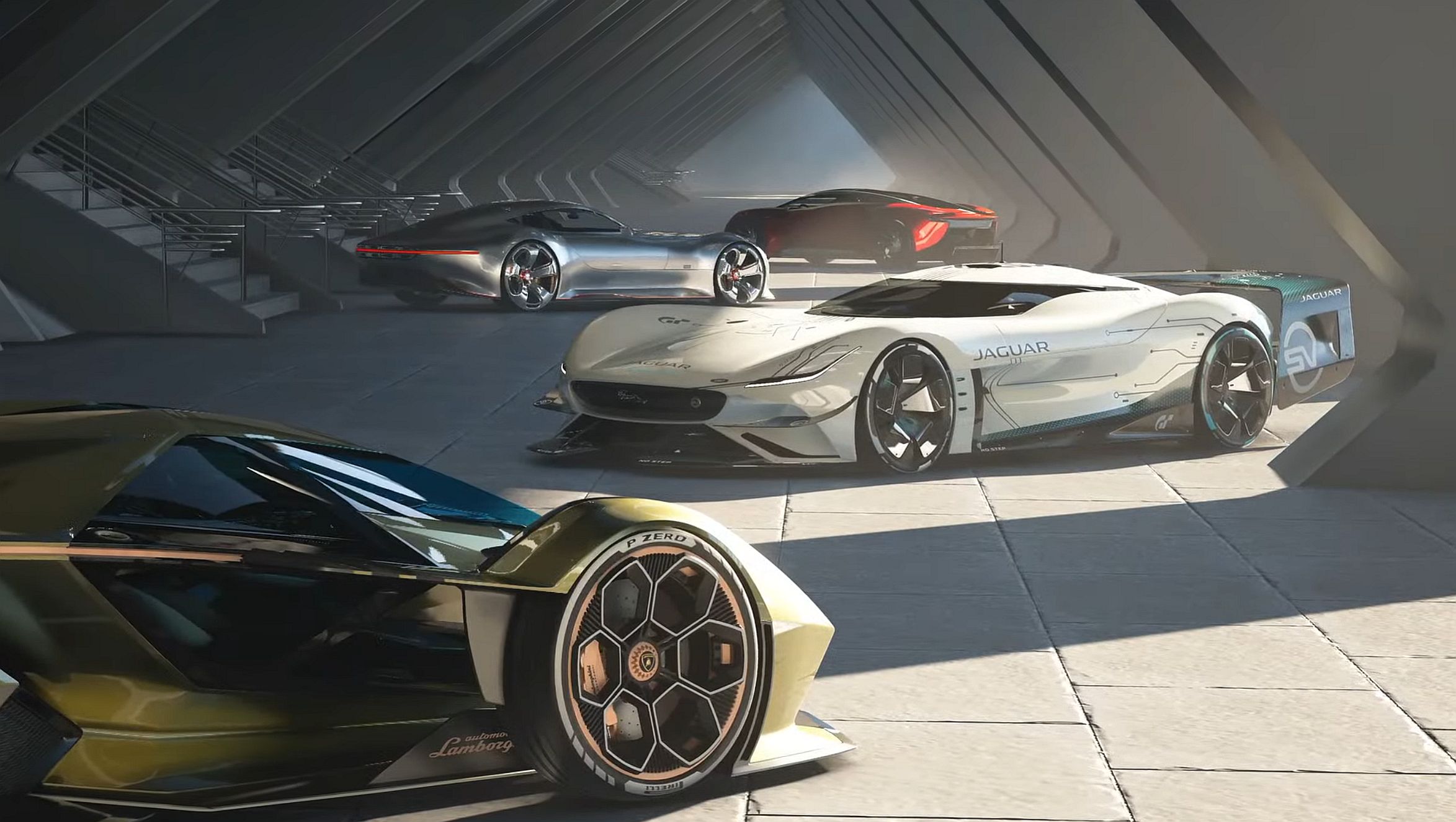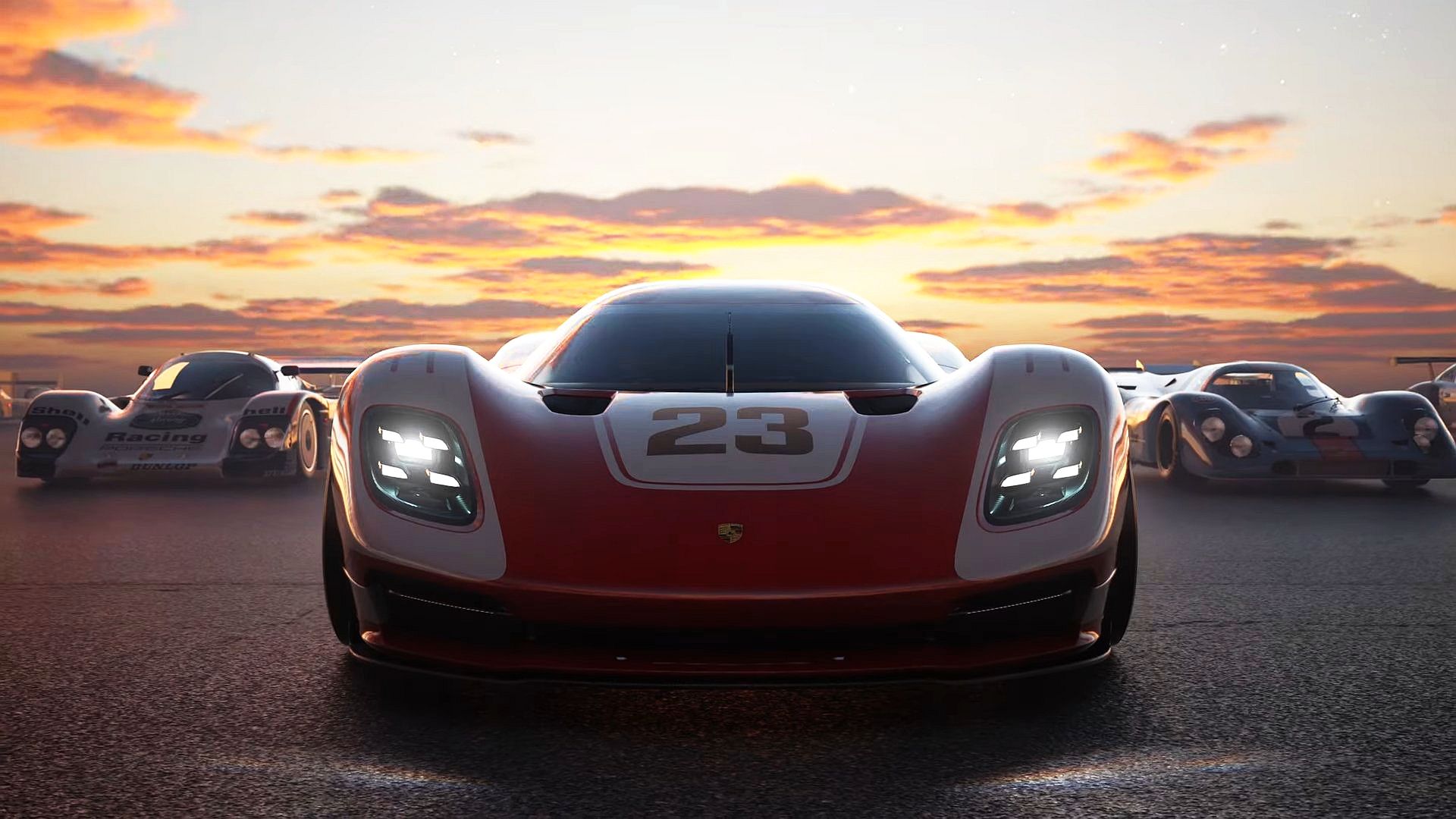But something significant’s happened in racing games since a Gran Turismo game with a number on the end last released (GT6 in 2013). In fact, a lot’s happened since GT Sport in 2017. In the last couple of years when much of our time’s been spent indoors, sim racing has surged in popularity, grown in legitimacy in the eyes of the motorsport world as a way into racing, and the sims people chase ghost laps in for weeks on end have an unprecedented level of - well, simulation. Can we still consider Gran Turismo 7, then, the real driving simulator? Its chief competitors in that regard are Assetto Corsa Competizione, Automobilista 2, the evergreen iRacing, Codemasters’ F1 series, and, oddly enough, its own predecessor, GT Sport. These are titles deemed realistic and broadcast-friendly enough to form the foundation of esports tournaments like The World’s Fastest Gamer, F1 esports Series, Logitech G Challenge, and the FIA Gran Turismo Championships. They’re match-fit esports titles. By contrast, the big headline features in Gran Turismo 7’s recent showing were Music Rally, a kind of zen checkpoint race synced to the beat of the song you’re listening to, and the Cafe, where car designers drop in to share their memories about the vehicles they dreamed up and made material. It portrays a different kind of game to the one you’d sit in a bucket seat chasing an extra hundredth for six hours straight. Despite those big nods to chilled-out driving and using the game as a hangout space, perhaps there’s a hard-nosed racer lurking under there. There’s a choice of graphics modes, for example - 60FPS mode or Ray Tracing Mode, whose titles don’t require any further explanation. Serious racers will, of course, opt for the former, and its inclusion suggests Polyphony’s in sync with a sim racer’s demands. More explicitly, the preposterously detailed lighting and weather give any of the current crop of serious racing sims a stand-up fight for fidelity. Gran Turismo 7 simulates astronomical behaviour to ensure the night sky and the cloud patterns look true to life in different geographical regions, and that certain stars and planets are only visible in certain conditions, which is pure endearing obsession from Polyphony - but that same approach has been taken to simulating weather changes. Project CARS 2, for example, has a number of different wet weather states. You can watch a shower turn into a monsoon, and you can feel the grip levels of your tires change as they cool and enter standing water. But you also see those changes in weather state quite artificially as you start a new lap. Not so here. The dampness of a track surface is simulated dynamically, depending on how much ‘water’ in the simulated ecosystem hits different parts of it. A bigger circuit like Spa might be drenched in certain corners and dry as a bone under the sunshine elsewhere. Standing water develops in areas of the track that could actually hold it - game capture showed some churned-up grass beyond an apex holding a lot of water, and a small recess by the trackside curb filled quite naturally with rain water. Over time, the track dries out in the areas the sun’s hitting hardest, and where the cars are displacing the water most often - the racing line. It’s hard to get a handle on quite how convincingly it evolves and affects the visuals and handling of a vehicle without actually getting the miles in, but the implication is that it’s a level beyond the weather systems we’ve seen in any title previously. There’s an ace up its sleeve in how it feels and sounds, too. The PS5’s DualSense controller is being harnessed for haptic feedback, which Polyphony’s CEO Kazunori Yamauchi describes as the range of frequencies “between vibration and sound.” In this zone, between 20-200Hz, you feel the resonance of the car body as its contact points roll over an uneven surface. It’s something you’ve been sold through sound before, and even the best force feedback wheels struggle to sell it. Polyphony thinks it can make the PS5’s pad feel like it’s flying across asphalt. It’s also used to convey front tire slip when you carry too much speed into a turn, surface textures differences like paint and track furniture, and engine and drivetrain vibrations. It’s probably not going to feel as good as a direct drive wheel, but then again it doesn’t require a second mortgage, either. If it can communicate a level of fidelity that controllers haven’t previously been able to muster through rumble feedback, that’s significant. Solo racing hasn’t previously offered much challenge to hardcore sim racers. The AI has been a longstanding weak spot in Gran Turismo, and the temptation to tune your way to glory has often distracted us from entering a fair fight. This time there are three difficulty levels - beginner, intermediate, and expert. Yamauchi recommends expert mode for hardcore racers, but the fact there are just three difficulty levels rather than a granular percentage scale as most other racing sims offer suggests solo training won’t be quite such a useful tool here. This is, after all, a game aimed at absolute beginners to the world of cars and motorsport as much as it’s aimed at those who’ve been playing since ‘97. Still, it has an active online racing sim to call upon in GT Sport. Yamauchi has said all the online matchmaking and lobby functionality from that game is carried over to this, so it appears there’s an esports-ready infrastructure under the bonnet. We can all but count on the game’s physics model to deliver. It’s hard to imagine a scenario in which it would have taken a step back from Gran Turismo Sport, a title more than robust enough in realism to host an FIA-adjudicated sim racing tournament. The series was the first to offer a bridge between sim racing and real motorsport through the GT Academy, and its graduates achieved great results in real cars. But will it model brake and tire temps with the same accuracy as Assetto Corsa Competizione? Will it model fuel depletion and tire deg quite as well as F1 2021? These are unknowns that may yet tempt some sim racers away from Polyphony’s luxurious game, with its photo mode and museum-like atmosphere. As best as one can assess it, just over a month before launch, Gran Turismo 7 isn’t trying to make iRacing redundant or convince ACC’s devotees to plug their direct drive wheels into it instead. Yamauchi sincerely wants to convert new automotive fans, you feel, as car culture changes and combustion engines become a dirty word. This really is a game trying to offer something absorbing to everybody, and while that would be commercial suicide for just about any other company, Polyphony has the heritage, the obsessive eye for detail, and the recent esports success to make it happen.

